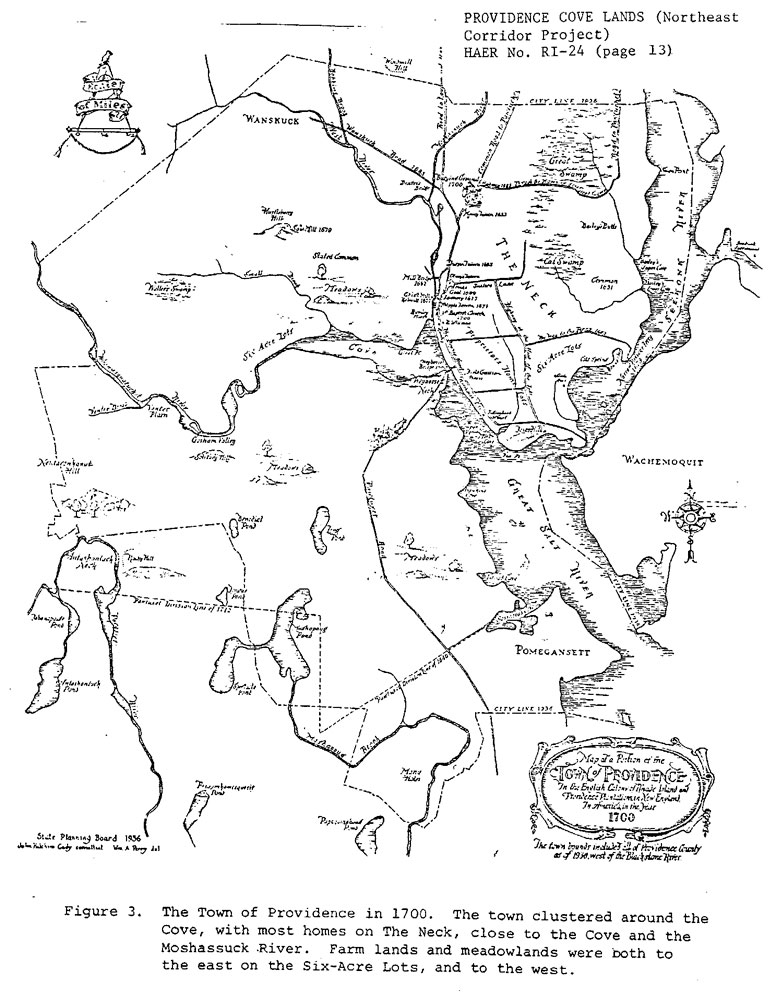Thematic & Historic Maps
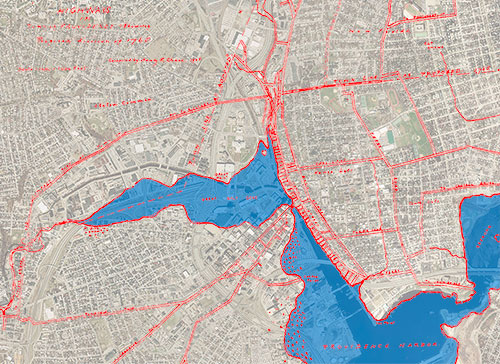
A 1770 map of Providence overlaid on a modern aerial photograph of Providence. The historic map is a tracing of a map drawn in 1905 by Henry Chace. The tracing was made by The Bucklin Society. The modern aerial photograph is from RIGIS. Click on the map to see it larger.
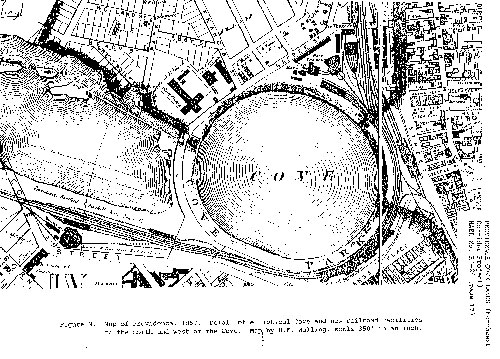
A map of "The Cove" and surrounding lands in 1857. The Cove was where Waterplace Park is now, but The Cove was much larger than the basin in Waterplace Park. However, The Cove is, in turn, just a memory of the once vast Great Salt Cove, that was over a mile long (see the 1770 maps above and below). Click on the map to see it larger (as a PDF).
Thematic Maps of the Watershed
These thematic maps of the watershed provide a view of the watershed from a variety of perspectives. Click on each map for a larger view of that map. The maps are courtesy of the Rhode Island Critical Resources Atlas unless otherwise noted.
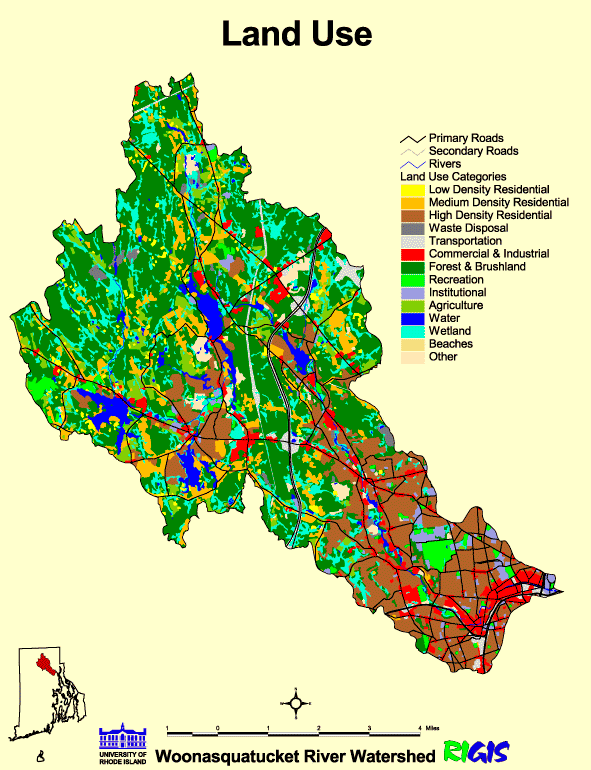
The Woonasquatucket is one of the more diverse of Rhode Island's watersheds in terms of its land use. Highly urbanized in the southern portions and rural in the more northern reaches, the watershed is home to a wide array of both assets and problem areas. Click on the map for a larger view.

Wetlands are present in every watershed community, although they are continually under threat from development. Forest land is also present in the watershed to varying degrees within each community. Click on the map for a larger view.

Soil hydrology is the study of water in the ground. There is almost always water below us no matter where we are. Sometimes it is close to the surface and sometimes it is deep below the surface. In some soils the water moves through the ground very quickly. In other places it stays relatively stable for thousands of years. In Rhode Island the water is generally pretty close to the surface and it generally moves through the ground relatively quickly. Click on the map for a larger view.
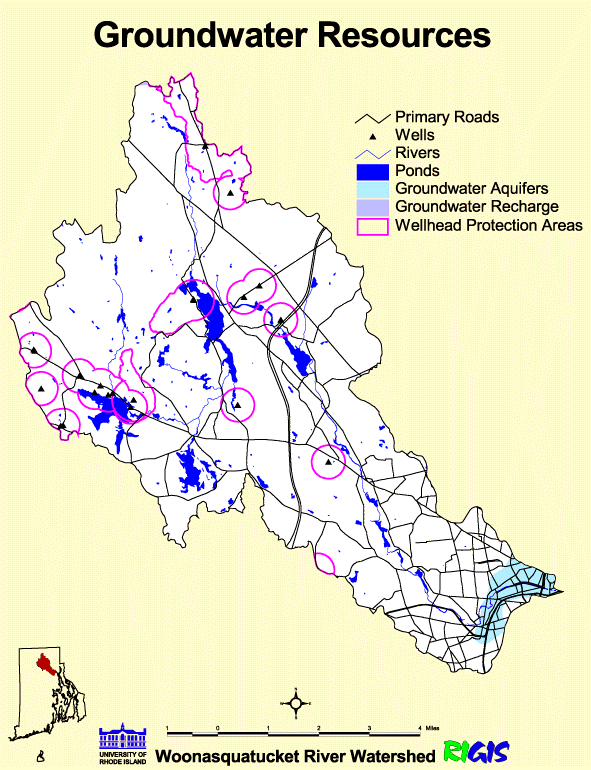
While much of the water used in homes and businesses in the lower watershed comes from surface water sources such as Scituate Reservoir, local wells are an important source of water in the central and northern parts of the watershed. These wells tap into the groundwater underneath the watershed. Click on the map for a larger view.
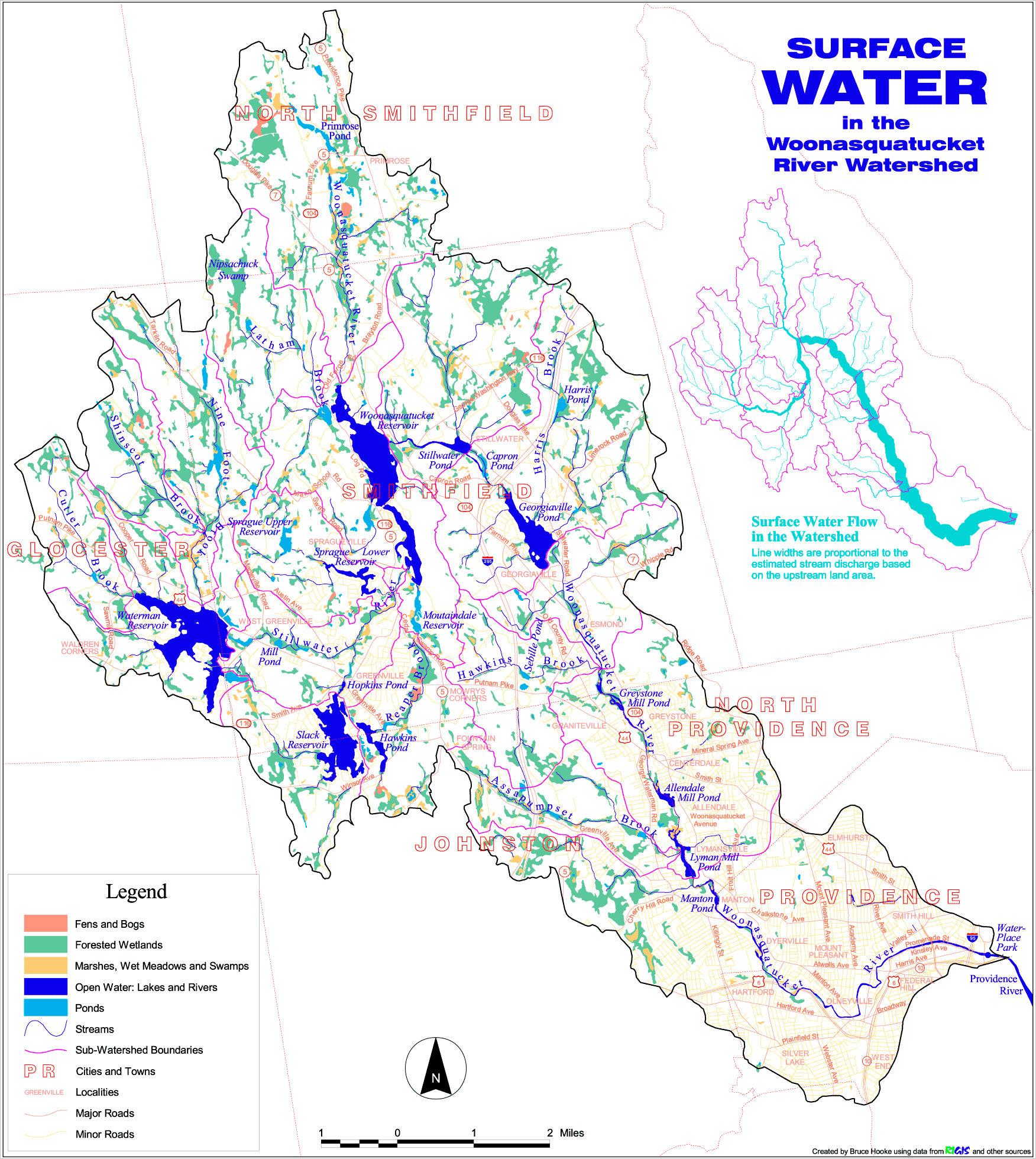
This map, created by Bruce Hooke, shows the surface water in the watershed. No matter where you are in the watershed there is a pond, river, stream, or wetland very close to you. Water falling on the ground in the watershed flows into these water bodies and eventually makes it way to the river and to Narragansett Bay. Click on the map for a larger view. NOTE: This is a large map (405 Kb) so it will take some time to download over a slow Internet connection.

